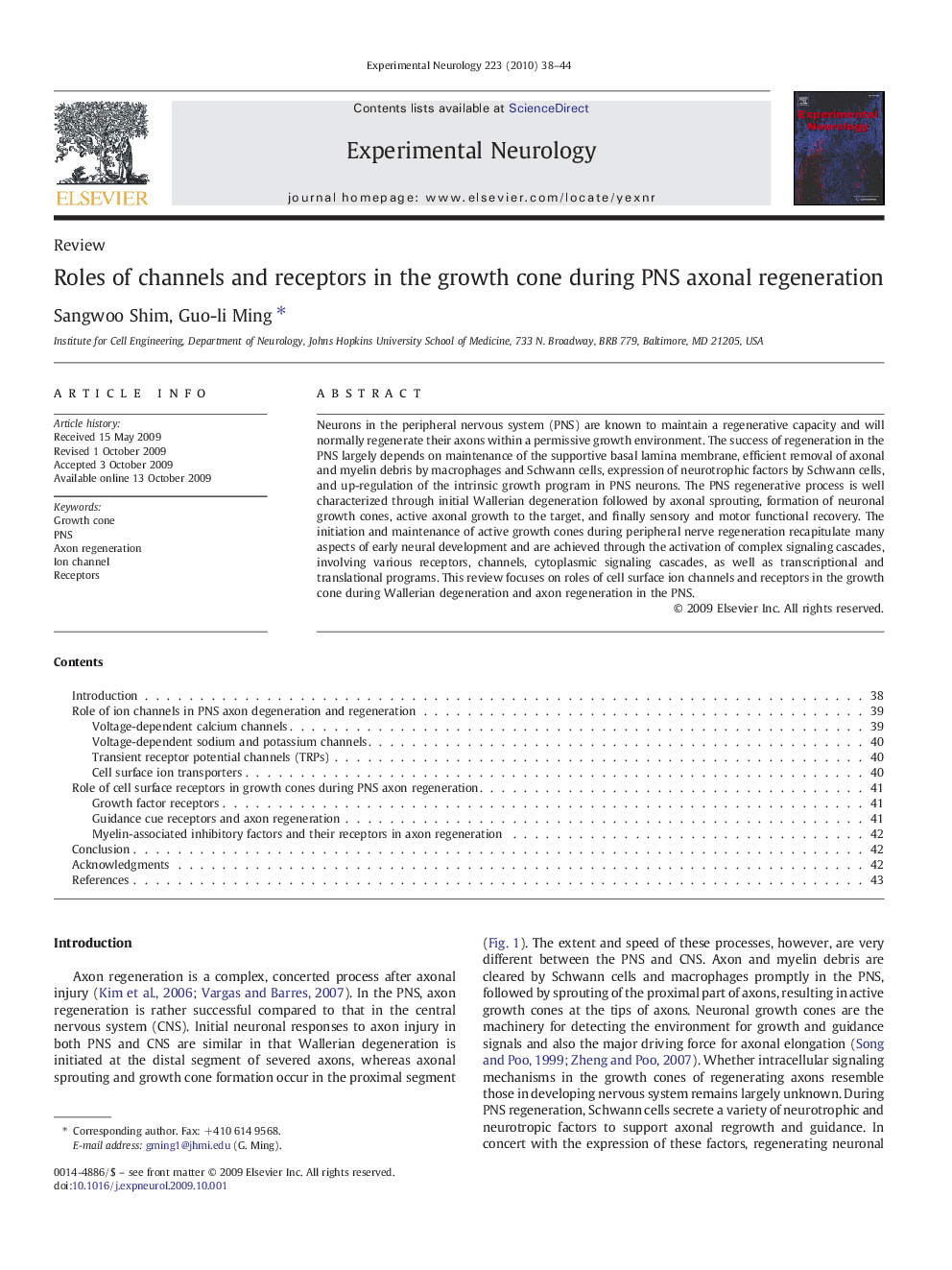| Article ID | Journal | Published Year | Pages | File Type |
|---|---|---|---|---|
| 6019348 | Experimental Neurology | 2010 | 7 Pages |
Abstract
Neurons in the peripheral nervous system (PNS) are known to maintain a regenerative capacity and will normally regenerate their axons within a permissive growth environment. The success of regeneration in the PNS largely depends on maintenance of the supportive basal lamina membrane, efficient removal of axonal and myelin debris by macrophages and Schwann cells, expression of neurotrophic factors by Schwann cells, and up-regulation of the intrinsic growth program in PNS neurons. The PNS regenerative process is well characterized through initial Wallerian degeneration followed by axonal sprouting, formation of neuronal growth cones, active axonal growth to the target, and finally sensory and motor functional recovery. The initiation and maintenance of active growth cones during peripheral nerve regeneration recapitulate many aspects of early neural development and are achieved through the activation of complex signaling cascades, involving various receptors, channels, cytoplasmic signaling cascades, as well as transcriptional and translational programs. This review focuses on roles of cell surface ion channels and receptors in the growth cone during Wallerian degeneration and axon regeneration in the PNS.
Related Topics
Life Sciences
Neuroscience
Neurology
Authors
Sangwoo Shim, Guo-li Ming,
